Rigby double rifles entered the modern era with the introduction of the .450 Nitro Express in 1898. John Rigby made use of the existing brass from the .450 Black Powder Express and loaded it with Cordite; which was a, then new, ‘smokeless’ propellent, far more powerful than the black powders that had been used up to that point.
The case was upgraded soon afterwards to provide better resistance to the increased pressures and Rigby began manufacturing rifles to take the new cartridge. In doing so, the .450 bullet was transformed from being considered a deer-killing projectile to one aimed at elephant and buffalo.
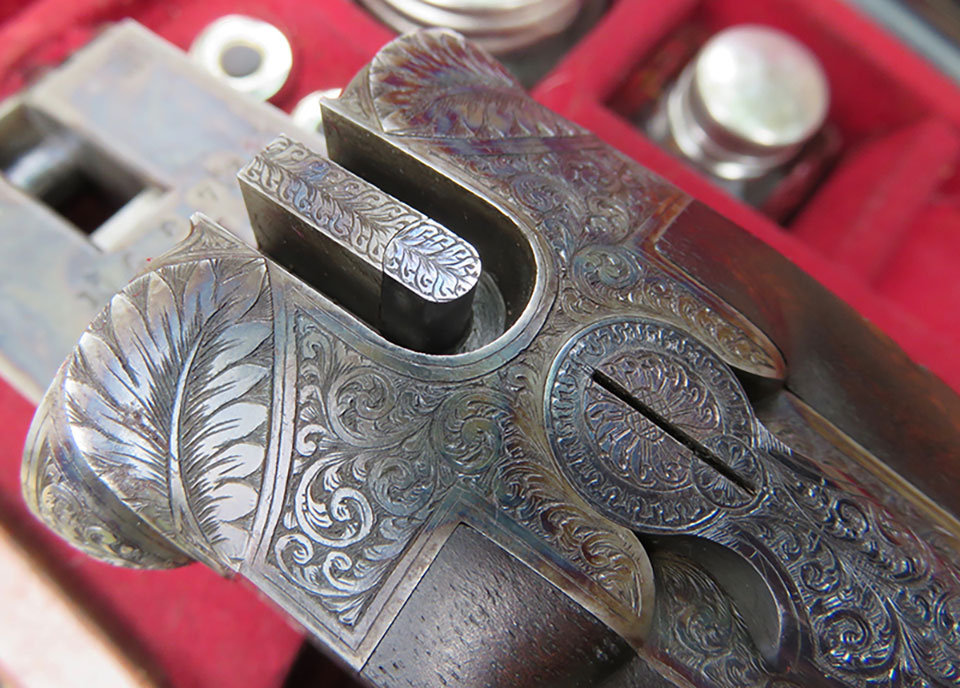
To propel a 480 or 500 grain bullet at over 2,000 fps, rifles needed to be strongly built and Rigby, like most others in the gun trade, considered that a third-grip action was required, despite the fact that most makers had, by then, dispensed with these when making shotguns for game shooting.
These, so-called, ‘treble-grip’ actions became widespread for securing the breeches of powerful double rifles and we can observe a progression from 1898 to the start of the Second World War; a period over which Rigby rifles altered in response to a changing market and manufacturing processes.
From the beginning, Rigby’s best rifle was built on the 1879 Rigby & Bissell patent ‘vertical bolt’. This is widely known in the trade as a ’rising-bite’ and it uses a Purdey double under-bolt and teams it with a third bolt, which is depressed or elevated by the operation of the lever (usually a top-lever or snap under-lever). This engages with a bite within a projection from the top-rib, slotting into a recess in the action.
The ‘rising-bite’ was always expensive to make and Rigby soon decided a lower cost alternative was required.
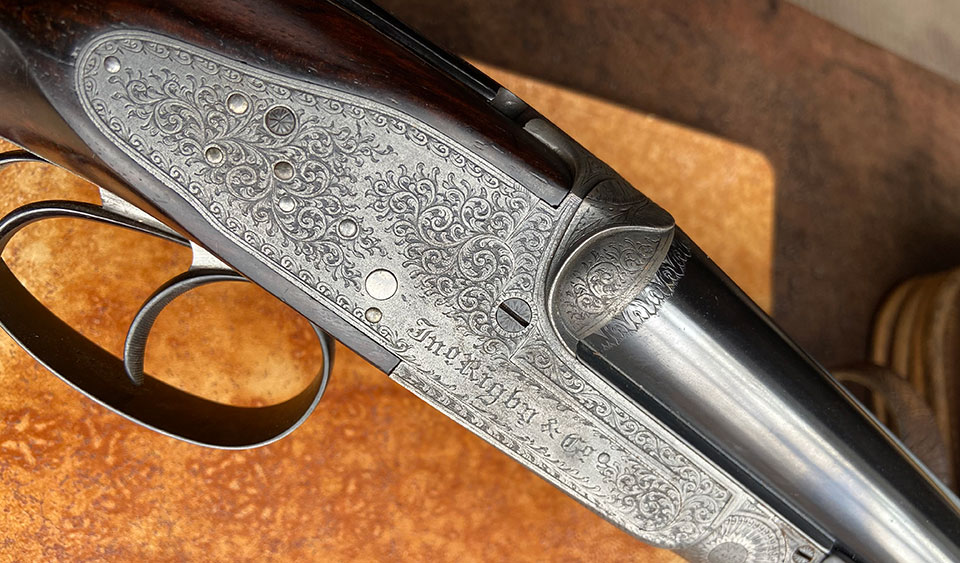
They made use of the proprietary Webley & Scott Cordite double-rifle boxlock action, which also has a Purdey double under-bolt but teams it with the 1884 Webley & Brain patent ‘screw grip’.
This features a threaded spindle, which puts downward pressure on a slightly angled, upward facing bearing surface, which is part of the doll’s head extension.
For second and third quality (‘B’ and ‘C’ class’) boxlocks Rigby made use of the Webley & Scott PHV-1 action, which has a spade-shaped doll’s head with a slot in the rear face. A swinging bolt from the top lever engages with this slot to add a third level of security, in tandem with the same Purdey double under-bolt the other two actions use.
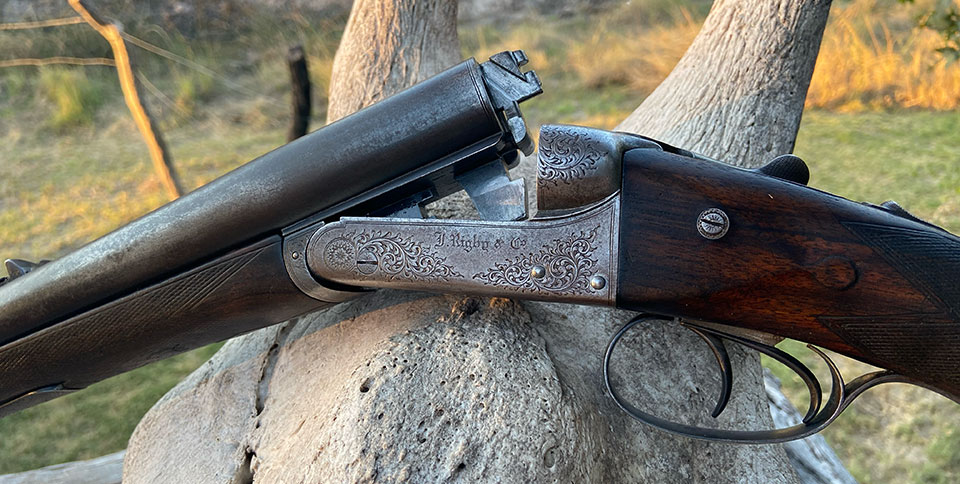
In the years from the start of the Great War, through the 1920s and into the 1930s, Rigby began to make best, sidelock, double rifles which were outwardly very like the ‘rising-bite’ model but used the Webley screw-grip action instead.
The advantage of using Webley & Scott actions was that Rigby could order them in the white for for making up in the workshops or have them delivered fully finished from the Birmingham firm, which specialised in providing such services to the wider trade, from their large factory.
The inventor of the ‘rising-bite’, Thomas Bissell, died in 1892. He had been used as an out-worker by Rigby since the early 1870s and his Bermondsey ‘works’, where he employed other gunmakers, was responsible for a good part of ‘rising-bite’ rifle production.
For example, ‘Bissell’ is recorded in the production journal as ‘barrel filer’, ‘stocker & screwer’ and ‘actioner’ more than anybody else until 1885, after which his name occurs only infrequently. His last entry appears in 1890, when he actioned, barrelled, stocked and finished No. 16036, a ‘double hammerless 16-bore’.
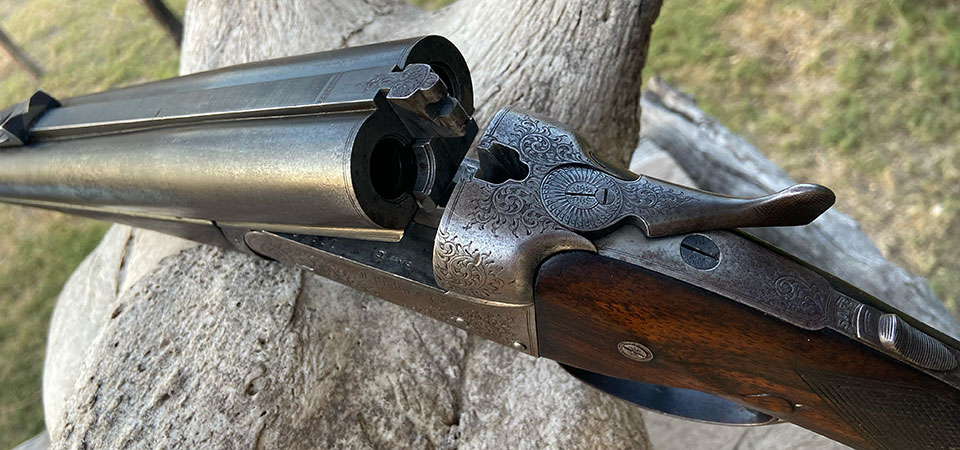
After Bissell’s demise, Rigby would have been reliant on Webley & Scott to ensure that the volume of orders they were taking could be delivered in a reasonable time. They continued to make the ‘vertical bolt rifles in their own workshops in good numbers until around 1912.
The Rigby books of the period 1886-1936 show ‘W&S’ listed often in the categories of ‘barrel filer’, ‘actioner’, ‘stocker’ and ‘finisher’, and descriptions go from mostly ‘vertical bolt’ to ‘top lever screw-grip’ or top-lever, Scott action’.
The step-change appears to have occurred in June 1910, when the first ‘top-lever, new-pattern action, ejector’ is seen instead of ‘top-lever, v-bolt, ejector’.
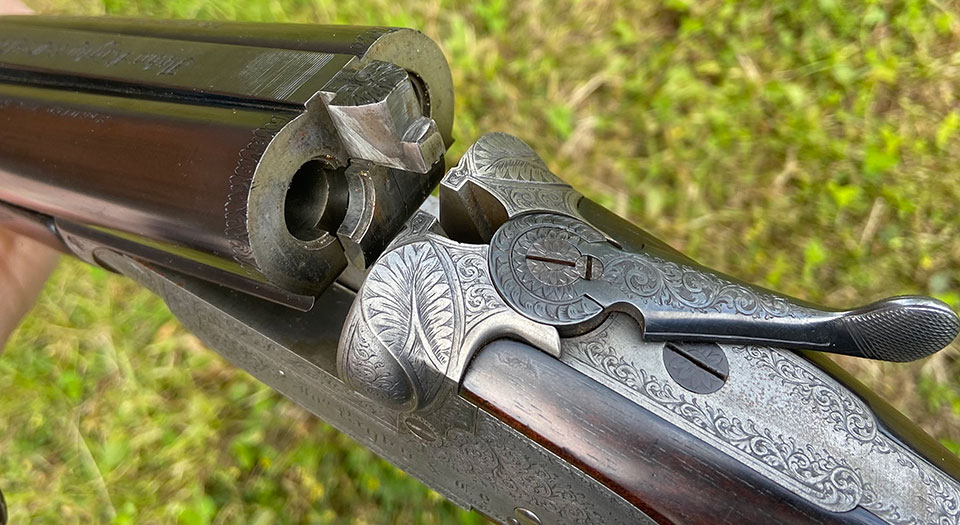
The term ‘screw grip’ first appears in August 1911, when rifle No.17708 has ‘v-bolt’ struck through and ‘Webley screw’ inserted in its place. No. 17736 is the first listed as ‘top-lever screw grip’, on January 19th 1912.
Thereafter, ‘top-lever screw grip’ is virtually universal and the book keeper stops completing the columns for ‘action filer’, suggesting that barrelled actions were coming complete from Webley & Scott for stocking and finishing in Rigby’s London workshops.
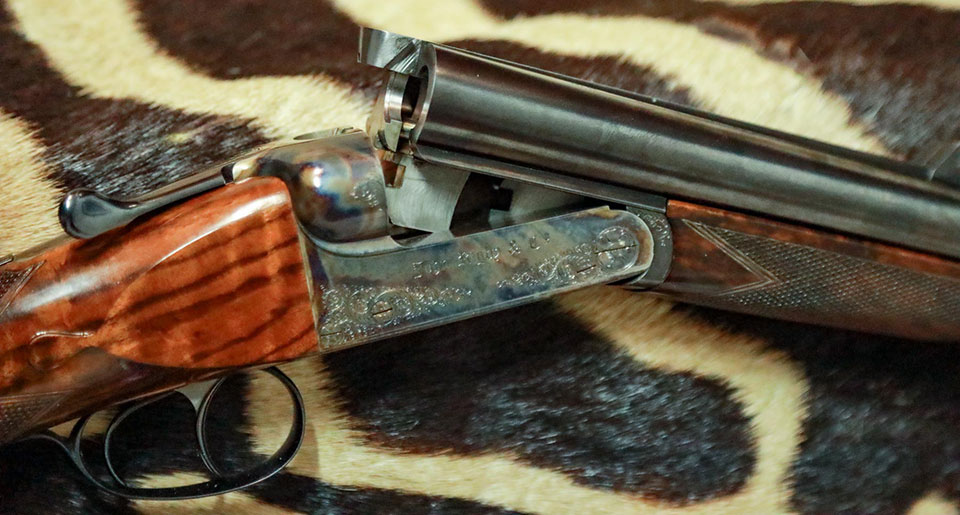
The gentry kept ordering side-lock double rifles, while the game departments and more frugal customers ordered ‘B’, ‘C’ and ‘D’ class boxlocks.
What every one of these designs has in common is the integrity that runs throughout its construction. I know of one Rigby ‘C Class’ .470 boxlock non-ejector, built as a plain rifle on a Webley & Scott PHV-1 action, which has been in the hands of game wardens and professional hunters in Tanzania and Botswana for ninety years without ever being returned to the UK for a service.
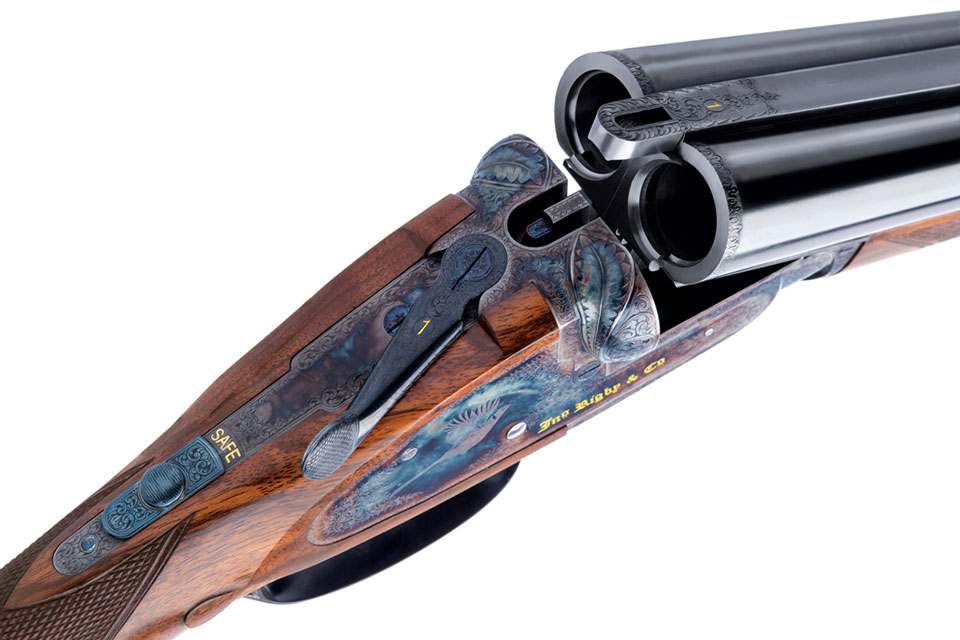
Today, Rigby has returned to production of the 'rising-bite' double rifle for the well-heeled and, with the introduction of the ‘Shikari’ model, it once again offers a modern version of the boxlock, treble-grip action rifles of the 1920s and ‘30s for passionate hunters of lesser means.
The modern 'rising-bite' model is identical to the original, apart from the small improvements of a solid bar action, through which the lumps do not show, and the addition of a little more steel at the back of the action to increase its strength.
The Shikari differs from both the PHV-1 and and the screw-grip actions in that the doll's head is circle jointed but does not have a third bolting point. It also has a solid bar action, without the through-lumps of the originals. The doll's head on the Shikari is replaceable, which will make re-jointing much easier and more satisfactory for future owners.
Published by Vintage Guns Ltd on




